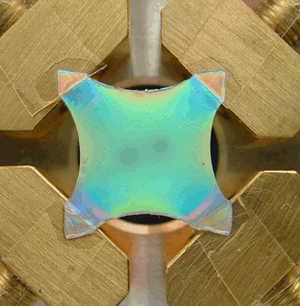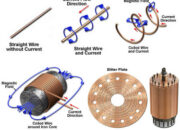The realm of photonics continually unveils novel modalities that challenge our preconceived notions of light manipulation. One striking advancement in this field is the development of the elastic laser, a device that efficiently spans the entire optical spectrum. This innovation pushes the boundaries of laser technology and holds the promise of transforming various applications, from telecommunications to biomedical imaging. The notion of bending light through elastic properties invites a reevaluation of established principles in optics, thereby piquing curiosity among academicians and practitioners alike.
The genesis of the elastic laser roots itself in the interplay between light and matter, specifically within elastic materials that exhibit unique optical properties. Surprisingly, the core concept of elasticity—often associated with mechanical properties—profoundly influences the behavior of light when photons interact with these flexible materials. This interaction can result in a broadening of the emission spectrum, paving the way for a myriad of applications. By harnessing the intrinsic characteristics of elastic materials, researchers have crafted lasers capable of emitting wavelengths that were previously challenging to attain, effectively bending the rules of traditional laser operation.
At the heart of this phenomenon is the principle of coherent light emission, wherein the emitted photons maintain a fixed phase relationship. Conventional lasers rely on active gain media, such as gases, liquids, or solids, to produce specific wavelengths through stimulated emission. However, elastic lasers leverage the mechanical compliance of their substrates, allowing for a more extensive interaction range with the electromagnetic spectrum. This unique interaction fosters a highly efficient energy conversion process, thus resulting in a continuous output across a broad spectral range.
One of the most compelling aspects of elastic lasers is their tunability. The design premise allows for real-time adjustments of the laser’s emission characteristics through physical deformation or strain applied to the elastic medium. Such capability is a significant departure from the rigid parameters of traditional lasers, which operate at predefined wavelengths. By altering the mechanical dimensions and shapes of the elastic material, researchers can dynamically modulate the photonic output, which is of paramount interest for various practical implementations.
Moreover, elastic lasers demonstrate enhanced functionalities that are particularly advantageous for cutting-edge technological applications. For instance, their integration into telecommunications infrastructures could facilitate expanded bandwidth capacities. The production of numerous wavelengths simultaneously allows for dense wavelength division multiplexing, significantly augmenting data transmission rates. As global demand for communication technologies escalates, the introduction of elastic lasers promises a transformative approach to managing increased network loads.
Furthermore, the biomedical field stands to benefit substantially from the unique properties of elastic lasers. Their ability to produce a broad spectrum enables precise targeting of tissues at varying depths, which is essential for non-invasive diagnostic imaging techniques. In processes such as optical coherence tomography (OCT) or fluorescence imaging, the versatility of elastic lasers could lead to enhanced contrast and resolution. This leap in optical capabilities holds the potential for significant advancements in early disease detection and monitoring.
In addition to the immediate applications, the fundamental science underlying elastic lasers offers a fertile ground for further exploration. The interplay between elasticity and photonics beckons a new understanding of photon-material interactions. As researchers continue to delve into the intricacies of these interactions, they are likely to uncover more profound principles of light behavior. This ongoing inquiry could yield insights into the development of advanced photonic devices, including improved sensors and imaging systems.
However, despite the promising implications of elastic lasers, several challenges remain. The production methodologies for these devices demand a meticulous approach to ensure consistency and reliability. Moreover, the stability of the elastic medium over prolonged use is a subject of investigation. The durability and longevity of elastic lasers are crucial for their adoption in commercial applications, necessitating further empirical studies.
Moreover, a comprehensive understanding of the thermal and optical limits inherent to elastic materials is essential to prevent unwanted energy losses. As temperatures fluctuate during operation, the optical characteristics may vary, possibly leading to shifts in wavelength output. Addressing these challenges through materials science and engineering will be critical in realizing the practical deployment of elastic lasers.
In conclusion, the advent of elastic lasers constitutes a significant stride in the domain of laser technology, predicated upon the novel intersection of elasticity and photonics. This innovation not only challenges established paradigms but also spurs an exhilarating reevaluation of light manipulation possibilities. With ongoing research and development, the promise of elastic lasers could very well herald a new era in diverse fields ranging from telecommunications to biomedical imaging. The curiosity piqued by this transformative technology aligns with humanity’s perpetual quest to understand and harness the fundamental forces of nature, thereby shedding light on the profound intricacies of our universe.










